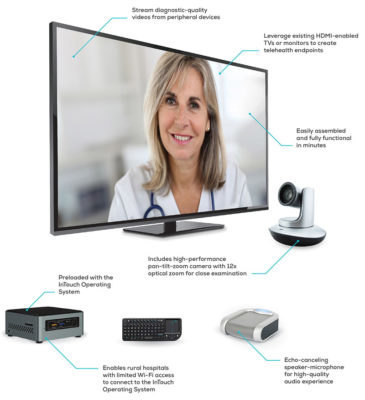Telemedicine: The Future of Health Tech Is Here Today

In a few short months, telemedicine has shifted from a nice-to-have to a medical must-have. In fact, it may very well become the new standard of care. Historically, telehealth has been tied down by reimbursement, regulations, and other administrative challenges. Now with today’s critical health and safety risks with in-person visits, remote healthcare has become a vital service for patients and doctors. No surprise we’re seeing a massive acceleration in its use.
According to McKinsey, telehealth adoption has jumped from 11 percent of US consumers using it in 2019 to 46 percent today. Providers have rapidly scaled offerings and are remotely caring for 50 to 175 times more patients than before. The mindset shift among clinicians is notable. Safety aside, doctors have begun to embrace telemedicine as a legitimate way to deliver care, having experienced its benefits firsthand.
Consider the sheer number of uses—not just for patient access to physicians from outside the hospital but for better care within them. Telemedicine can support seamless doctor-to-doctor collaboration, and, when turned to face the patient, serve as a safe way to connect with family who can’t be in the room.
“Now, if you need a neurologist or a neonatologist or critical care specialist, telemedicine can bring them to you,” says Dr. Yulun Wang, a Fellow at Teladoc Health. “And in effective ways that rival in-person interactions.”
Health Tech Connects Patients to the Specialists They Need
An example of telehealth in action is at Swedish Health System, the largest nonprofit healthcare provider in the greater Seattle area. As part of the Providence St. Joseph Health family, it is a leader in innovative care throughout the region.
Swedish Health knew that frequent contact with intensivists—physicians trained to care for patients with multi-organ problems—can reduce ICU patients’ mortality, morbidity, and length of stay. To overcome a shortage of intensivists, one hospital was using telephone consults.
But these consults proved frustrating for both sides of the ICU teams. The physicians felt uncomfortable making recommendations for patients they couldn’t see, and the ICU nurses didn’t feel adequately supported.
To create a better support model, Swedish Health uses the Teladoc Health TeleICU and Teladoc TV Pro platform to convert existing digital displays in patient rooms into virtual care devices. Critical-care physicians were then able to beam into patients’ ICU rooms throughout the night and actively look for potential complications, round with the bedside staff, and address issues as soon as they arose.
This more robust intensivist support led to a 110 percent increase in solution utilization and clinician engagement—just 30 days into the program—and improved outcomes for the hospital on several dimensions:
- Remote intensivists gained increased confidence in their ability to safely administer care.
- Clinician satisfaction and workflow efficiency achieved significant improvements.
- Length-of-stay and observed-to-expected mortality in ICU patients trended downward.
Swedish Health’s successful implementation is a prime example of the value and importance of bringing remote physicians’ eyes and ears into a patient’s room. When it comes to delivering critical care, telephone consults just aren’t enough.
Safety aside, doctors are embracing telemedicine with @TeladocHealth as a legitimate way to deliver care.
Telemedicine Runs on Powerful Edge Compute
It’s not only the device itself that makes the solution so powerful but the software and network behind it. But powerful edge compute is required. Software runs at the edge on the Intel® NUC, connected to a digital display—converting it to a telemedicine station. The system is further enabled with a standard Pan Tilt camera, an external microphone, and a speaker (t 1).

Of course, the software running in the background is equally important for that care to be delivered smoothly. “Just like with an iPhone, a great piece of technology unto itself, it’s really the software that drives the TV Pro,” notes Wang. “And that software is different by use case, whether for ICU patient care, behavioral health, or neurology.”
But the Intel® processor-powered edge computing is always the same, with a codec (for compression of the video and audio signals before they’re sent to the cloud), commands coming from the far end to control the movement of the camera, and encryption, decryption, and any statistics around workflow.
All a clinic or hospital needs for installation is a smart digital display, a wall to hang it on, and an internet connection. Once TV Pro is online, the Teladoc Health cloud pings it every two minutes—as part of its unique proactive monitoring service—to make sure the connection is live and ready for when a clinician wants to use it.
The Future of Healthcare, Today
With the advent of telemedicine, technology has done for healthcare what it’s done for online retail and banking. And while eliminating time and space constraints on access to services is certainly a boon for patients, the rising popularity of remote healthcare is about more than just convenience.
Today, it isn’t just an emergency measure but part of the answer to a perennial question: how to bring patients high-quality care in the safest, most efficient way possible.
What does this mean? Possibly a systemic shift in healthcare models, with virtual care woven throughout the patient journey wherever it makes sense. “Perhaps first and follow-up visits will be virtual from now on,” says Wang. “Regardless, I think the healthcare system is changed forever.”